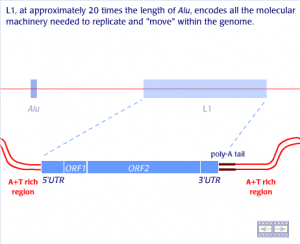Macrolides are antibiotics which consists of a large macrocyclic lactone ring (generally consisting of 12-17 atoms in the ring) to which are attached deoxy sugars. The attached sugars are desosamine and cladinose. Macrolides are natural products which belong to the class of polyketides. Macrolides (such as erythromycin, azithromycin, clarithromycin, dirithromycin, troleandomycin, etc.) are useful in treatment of infections caused by gram-positive bacteria. The macrolides are considered to be slightly broad-spectrum antibiotics when compared to penicillins and are commonly used in place of penicillin in patients which demonstrate allergic symptoms to penicillin. Clinically macrolides are the most important class of antibiotics.
Although the exact mechanism of action of macrolides is not clear, it has been hypothesized that macrolides show their action by blocking protein synthesis in bacteria in the following ways:
- Preventing the Transfer of the Peptidyl tRNA from the A-site to the P-site.
- Promotion of Peptidal tRNA Dissociation
- Blocking Peptidyl Transferase.
- Preventing Ribosomal Assembly
The extent to which each of these mechanisms is followed varies from macrolide to macrolide and it is believed to be dependant on the size of the ring and the sugars attached.
Preventing the Transfer of the Peptidyl tRNA from the A-site to the P-site and Promotion of Peptidal tRNA Dissociation
The macrolide antibiotics seem to bind at the P-site of the 50S ribosomal subunit. As a result of which, during translation, the P-site is occupied by the macrolide. When the t-RNA attached with the peptide chain tries to move to the P-site, it cannot go there due to the presence of the macrolide, thus getting thrown away. This prevents the transfer of the peptidyl tRNA from the A-site to the P-site and blocks the protein synthesis due to the inhibition of the translocation of the nascent peptide chain. The macrolides also promote the premature dissociation of the peptidal tRNA from the A-site.
[swfobject]1280[/swfobject]
The above animations has been supplied by Dr. Gary E. Kaiser from the Community College of Baltimore County– and it illustrates the mechanism of action of how translation of mRNA by tRNA occurs in ribosomes. The transcript of the animation is as follows:
” The macrolides bind reversibly to the 50S subunit of bacterial ribosomes. There is evidence that some prevent the transfer of the peptidyl tRNA from the A-site to the P-site, thus preventing the elongation of the polypeptide chain. “
Blocking Peptidyl Transferase
Macrolides bind to the P-site of the 50S ribosomal RNA and also block the action of the enzyme peptidyl transferase. This enzyme is responsible for the formation of the peptide bonds between the amino acids located on the A-site and the P-site in the ribosome. By blocking this enzyme, the macrolides are capable of inhibiting protein biosynthesis and thus kill the bacteria.
[sociallocker id=3909][swfobject]1281[/swfobject][/sociallocker]
The above animations has been supplied by Dr. Gary E. Kaiser from the Community College of Baltimore County– and it illustrates the mechanism of action of how translation of mRNA by tRNA occurs in ribosomes. The transcript of the animation is as follows:
” The macrolides (erythromycin, azithromycin, clarithromycin, dirithromycin, troleandomycin, etc.) bind reversibly to the 50S subunit.They can inhibit elongation of the protein by the peptidyltransferase, the enzyme that forms peptide bonds between the amino acids. “
Preventing Ribosomal Assembly
Research has shown that in the presence of macrolides, the amount of free 50S ribosomal subunits increases within bacterial cells, which lead to the hypothesis that macrolides prevented the assembly of the ribosomes in bacterial cells and also caused bacterial cell death.
References
- Gaynor M., Mankin A. S. Macrolide Antibiotics: Binding Site, Mechanism of Action, Resistance. Current Topics in Medicinal Chemistry 2003, 3, 949-960.
- Mazzei T., Mini E., Novelli A., Periti P. Chemistry and mode of action of macrolides. Journal of Antimicrobial Chemotherapy 1993, Vol 31 Supp. C, 1-9.




what’s the difference between the mechanism of the chloramphenicol and that of macrolides?